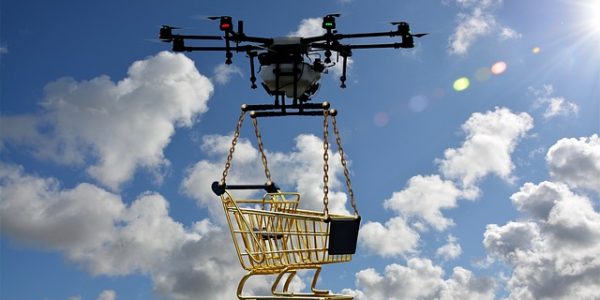Most of the heavy lifting in supply chain management is done while getting goods from factories and warehouses to transportation hubs. However, getting these goods from hubs and distribution centers to their final destination is arguably the most important link in the supply chain. The last mile in delivery has a lot of room for improvement. Automation has improved manufacturing and distribution processes; could robots be the answer for last mile logistics, too?
The problem with the last mile
Last mile delivery refers to the final step in the supply chain; getting goods from the smallest distribution center to your front door.
Logistics companies have found a cost-effective and efficient way of transporting goods through most of the supply chain. Getting shipments to transportation hubs and distribution centers is the easy part. Orders are funneled from larger to smaller regional hubs until they arrive at your local courier. The process is streamlined and smooth-going up until this point. It’s getting those boxes to doorsteps where things start getting a little messy.
We call this the last mile problem. This final step in the delivery process makes up 28% of the total cost to move goods.
Our current answer to the last mile problem involves men in shorts racing box trucks through residential neighborhoods and urban streets, performing rolling stops, taking right turns only, and leaving packages unattended on doorsteps.
Last mile logistics becomes increasingly important as ecommerce makes up a larger share of overall purchases, and consumers expect free shipping, or affordable same-day or 2-day shipping options. Ecommerce made up 14% of total retail sales in 2018, and it’s expected to increase.
Automating the last mile
Logistics companies continue to search for a solution to the last mile problem. How can we make this step in the supply chain as efficient, economical, and streamlined as the rest of the process? As is the case with most things in our modern world, the answer seems to lie in automation.
Automation cuts out inefficiencies. It’s predictable, reliable, and it’s cost-effective. You can see the results — good or bad — of changes you make with automated systems, and adjust accordingly.
Ford is developing a delivery robot called Digit that, with the help of an autonomous vehicle, completes the last mile delivery without the need for human intervention. Digit can carry 40-pound packages and walk up stairs.
Several companies, including Amazon and FedEx, are working on delivery robots that can automate the last mile by rolling along sidewalks and walkways.
A Michigan startup called Refraction recently unveiled a robot that could knock out the last mile of delivery by using both bike lanes and roads. They’re touting the robot as the Goldilocks of vehicles: large enough to move big deliveries, small enough that it is still mobile, and affordable.
Robots are the future, period
Is automation the future of last mile logistics? It makes perfect sense; robots are the future of everything. They’re also extremely important at present. If you own an Indramat motion control system, you know just how important your factory robots are for your business.
We can help make sure that your machines continue to run as efficiently as possible. That way you’ll be ready whenever the last mile problem is finally solved. Call 479-422-0390 for immediate Indramat service and support.
